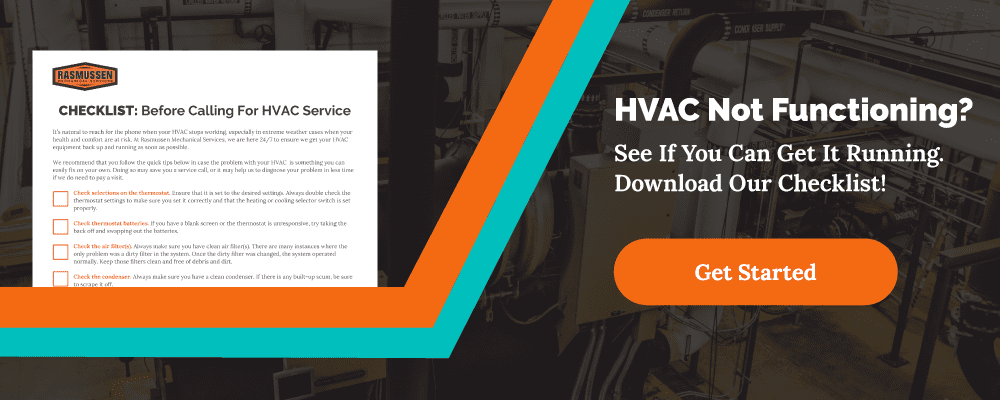When you are looking to install an HVAC system in your location or building, it’s important to consider the HVAC system cost that will be associated with the system overall. Don’t stop at installation and equipment costs. On average, a well-maintained HVAC system should have a lifespan of about 20-25 years.
On average, a well-maintained #HVAC system should have a lifespan of 20-25 years. Achieve energy efficiency with this guide: Click To TweetMake Comparisons
The costs associated with running the system after install is often overlooked. People proactively seek opportunities to cut costs and ensure they have enough budget for other high-ticket items. But, if you go with an inexpensive, inefficient HVAC system, your costs will add up, in the long run, thanks to a system racking up energy bills and requiring frequent part replacements. Paying higher costs upfront for an energy-efficient HVAC system will save the company in operating costs and overall budget savings. The building owner or facility manager needs to focus on lifecycle costs when evaluating HVAC options instead of just seeing the upfront ticket price. For effective comparison, look at the total costs of ownership, factoring in fuel and electrical costs, for a 10 or 20 year period.
Factor Design Shortcomings
There are a lot of buildings that are paying high operating costs due to their HVAC system’s shortcomings. An example would be a building with large supply and return fans that have to run too many floors after hours just to pressurize an HVAC shaft and condition one small tenant space. Designing an HVAC system with a large air-handling unit with large zones will save on install costs upfront. Unfortunately, it won’t save over time because of the large operating costs associated with conditioning big spaces. Is this something you are experiencing? Contact our designers to learn how to reduce this waste.
Consider System Options
Variable refrigerant flow (VRF) systems offer premium comfort, separate tenant comfort control, and low operating costs. However, the price for these systems is higher than their lower-priced competitors. Tenant comfort control provides more effective energy management for after-hours energy use. This is due to the systems only required to keep up with a specific area instead of a large space or the whole building. Chillers with magnetically elevated bearings also have low operating costs (KW/ton), but cost more than conventional units. Direct digital control (DDC), down to the local variable air volume (VAV) box or VRF air discharge device, provides facility managers with an opportunity for energy savings. Quick and accurate responses to tenant comfort complaints are easy and DDC is a very energy-efficient solution.
[Want to ensure that you are implementing energy-efficient procedures to keep your HVAC running? Download our HVAC Preventative Maintenance Checklist.]
When considering HVAC system cost savings, look at energy-efficient options:
- Geothermal
- Water source heat pumps
- VAV boxes, self-contained HVAC units
- High efficiency condensing hot water boilers
- Night-time setback controls
- Programmable local thermostats
- VFDs (variable speed) controlled fans and pumps
Free cooling should be implemented by waterside economizer (cooling tower used alone in winter for cooling needs) or airside economizer (cool outside air) used for cooling in mild weather.
Installation Costs vs Operating Costs: Learn how #energy efficient systems increase your operating budget. Click To TweetDoes it Work?
A recent study found that commercial buildings that benchmarked their energy performance cut their energy bills by 7% over 3 years (2.4% per year on average). That’s equal to:
For a 500,000-square-foot office building:
- Cumulative cost savings of $120,000
- Increase in asset value of over $1 million
For a medium-box retailer:
- Cumulative cost savings of $5,000
- Increase in sales of 0.89%
For a full-service hotel chain:
- Cumulative cost savings of $4,100
- Increase in revenue per available room of $1.41
For an 800,000-square-foot school district:
- Cumulative HVAC system cost savings of $140,000
- Salary of 2 full-time teachers each year
Finding an energy-efficient HVAC system can be tricky, but if you understand the savings associated with energy-efficient HVAC systems, the choice becomes much more clear. Rasmussen Mechanical Services considers our clients’ comfort and cost savings as a top priority. Our HVAC Design-Build services are customized to your unique needs, providing preventive, predictive and proactive solutions and guidance. Contact us today to learn more about our expert-lead HVAC services and how the Rasmussen Mechanical Services team can help you achieve better efficiency.




